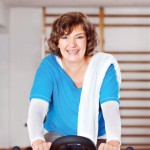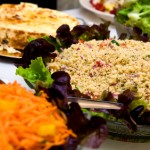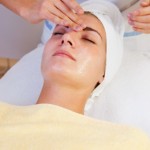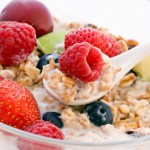I have a friend who drinks a lot, but he says he doesn’t have a problem. His line is: “I drink, I get drunk, I fall down. No problem.” It’s pretty funny and I always laugh when he tells me this.
 But, I have a few thoughts pertaining to alcohol that I would like to discuss here and perhaps they will have some meaning for you in your life.
But, I have a few thoughts pertaining to alcohol that I would like to discuss here and perhaps they will have some meaning for you in your life.
So let’s say you go out for a few drinks with some friends. You drink and get drunk. And, let’s say, for arguments sake, you get really drunk, to the point that you are sick (which happens to people sometimes, I think we can all agree on that) and then the next day, when you wake up you experience a really bad ‘hangover’.
So what’s happened here?
What is a hangover? I mean, we know the symptoms: you may experience a lingering sick feeling, become nauseous perhaps, and have a bad headache, difficulty concentrating, tolerating noise and all that—but what does all that mean?
It means you suffered a brain injury.
Just think about it for a second. Let’s say you were out riding your bicycle one day and you slip on some gravel. You fall and hit your head on the pavement and you are knocked unconscious (you were obviously not wearing a helmet). What does this mean? It means you suffered a brain injury and, as a result, you were knocked unconscious, right? You are taken to the hospital and on the way you regain consciousness. At the hospital you are diagnosed with a ‘concussion’ and for the next few days you are not a hundred percent, you feel a little sick, perhaps woozy, nauseous, disoriented, unable to concentrate and so on. But a few days later you recover and you are fine. What this means is that when you fell and hit your head, your brain suffered an injury. The result of injuring your brain was that you were off balance for a few days while your body did the necessary repair work to recover from the injury.
But compare the symptoms of a concussion with those of a hangover. Do you see any similarity between them? You should—they are the same. The only difference is that in one case the symptoms are the result of a traumatic injury (you hitting your head on a concrete pavement) and in the latter scenario the symptoms arise out of a chemical injury.
Most people don’t think of hangovers in this way. Hangovers are a kind of social joke. However, in truth, what’s happening when you drink to the point where you become sick is that your brain, on which alcohol has an impact, is being shell-shocked, it gets injured. And we can tell it suffered an injury because consequently the next few days are not the same for you. Your body has to do repair to the brain so that you can return to normal.
Many people do this to themselves repeatedly. The fact that it appears as though they return to normal after a few days means to them that the hangover was just a lasting but benign effect of the alcohol they drank. But the alcohol has metabolized out of their system long before they recover from the aftereffects. So, if the alcohol has gone out of the system, why are they still recovering? They are recovering because there was damage that has not yet been repaired.
Let’s extend this dialogue further. So a person drinks heavily again and again and every now and then suffers a hangover. The body is forgiving; we know that, because the individual returns to normal after a few days. But let’s say the body, even though it is very forgiving, cannot repair all the damage to the brain? What happens if repeated injury to the brain overwhelms the body’s capacity to repair it? What would that mean?
It would mean the person now has some permanent damage to their brain, even though they may not realize it. This may start to impact their memory, mood, concentration, attention, they may develop a slight tremor in their body (as a result of damage to their extrapyramidal system), they may develop problems with their sensory system, eyes, ears, taste, etc., and they may not be aware that it is the result of these repeated hangovers (or repeated injury to the brain—what I consider a hangover to be.) The person may have problems in multiple areas depending upon how widespread or how localized the damage is.
Something to worry about, right?
So here is one final bit before I conclude this article. Sometimes, in some rare cases, when people drink really heavily, to the point where they get physically sick (even if they are not habitual drinkers or, ‘addicted’, if you will) they can trigger a seizure in their brain. The shell-shocked brain’s electrical system gets short-circuited for some reason and even though this person has never had a seizure before, on this day, something goes wrong and a seizure is triggered. Now, this will scare anyone wouldn’t it? But here’s the problem. You would assume that the person, after having a seizure and being scared out of his wits and deciding to stop drinking heavily, would then be safe from any further seizures. You would think this is what would happen, but, in reality, there is no guarantee of this. There is nothing to say that if you trigger a seizure once, you will ever be safe from it after that, even if you stop drinking entirely.
So there is a lot to worry about when it comes to alcohol. One doesn’t just have to be concerned about addiction one also has to worry about abuse of alcohol, even if it is only periodic, as it can open up the proverbial Pandora’s Box and lead to some very significant problems for a person.
What is my underlying intention in talking about all this? It has been my experience that when you give people real information they can make remarkable changes in their lives as a result of that information. So I am providing real information with the hope it will help some people make good decisions. Am I saying people should not drink at all? No. That is not what I am saying. I am making a case for moderation in drinking. There is nothing wrong with having fun in life, just be careful you don’t hurt yourself.
Alexander Dhand is a Registered Psychologist in private practice in Calgary, Alberta. He practices in the areas of Addictions, Depression, Anxiety, Stress, Posttraumatic Stress Disorder (PTSD), Chronic Pain, Self-Esteem and Workplace issues.
Hot flashes, anxiety, irritability, insomnia. Menopause is a natural stage of life, but that doesn’t mean you have to live with the symptoms of hormonal fluctuations and reduced estrogen. The good news is that many of these symptoms can be lessened with diet and exercise.
What is menopause?
 Menopause is the termination of menstrual cycles. It generally begins between the ages of 45 to 50 and lasts until the age of 55. When a woman has not menstruated for one full year, she is considered post-menopausal. The cessation of menstrual cycles leads to a hormonal imbalance and causes many side effects.
Menopause is the termination of menstrual cycles. It generally begins between the ages of 45 to 50 and lasts until the age of 55. When a woman has not menstruated for one full year, she is considered post-menopausal. The cessation of menstrual cycles leads to a hormonal imbalance and causes many side effects.
Symptoms
Menopause is associated with a decrease in bone density and muscle mass and an increase in fat mass. Less muscle mass means less muscular strength, increasing the risk of falls, fractures and a decrease in quality of life. A decrease in bone density increases the risk of osteoporosis. The hormonal changes that accompany menopause cause hot flashes, stress, mood fluctuations, irritability, anxiety, sleep disorders, rapid heartbeat, memory changes and reduced libido. The reduction in estrogen also promotes the accumulation of fat on the stomach and central region and less fat on the hips and extremities. This shift in body fat increases the risk of heart disease and stroke.
Tips for reducing your risk and your menopausal symptoms
A healthy diet and regular physical activity will reduce your risk of heart disease and stroke by promoting optimal blood pressure, a healthy body weight and lower stress levels.
Decreases in muscle mass and bone density can’t be prevented but they can be slowed and almost halted. Weight-bearing exercise activities such as strength training, heavy household chores or walking can help keep your bones and muscles strong.
Cardiovascular exercise helps improve body composition, which will help decrease the risk of heart disease. Performing regular strength training will also help build or maintain muscle. The more muscle you have, the more fat you will burn and the higher your metabolism will be throughout the day. Increased metabolism will improve body composition and decrease your risk of heart disease.
A diet high in calcium and vitamin D slows the degeneration of bone tissue. Good sources of calcium are low-fat milk, yogurt, cheese, fortified soymilk, almonds, sesame seeds and dark green leafy vegetables such a broccoli and kale. Good sources of vitamin D, which is needed for calcium absorption, are fortified milk and soymilk, margarine and fish oils.
Decreasing your intake of red meat, alcohol, salt and caffeine will also help keep your bones healthy.
With the summer months (hopefully!) just around the corner, many of us are looking to lighten up our dinner plates as well as our waistlines. Does ‘lightening up’ have to involve a sacrifice for your taste buds? Not at all.
There are many ways you can substitute ingredients to improve the quality of your diet while getting all your essential vitamins and minerals. Here are some ingredient replacement ideas to help you get there.
Out with: fruit juice
In with: whole fruit
Even fresh-squeezed juice can add a lot of unnecessary sugar to your diet. Think about it—how many oranges does it take to make a glass of orange juice? At least 3 or 4. Now think of how full you would feel if you ate three oranges in one sitting. One whole orange will keep you fuller than a glass of juice, for 60% less calories and 4 extra grams of fibre.
Out with: red meat
In with: legumes
As you know protein is important; however, many of us get more than the recommended weekly amount of red meat. Try beefing up that lasagna or pasta sauce with half a cup of steamed lentils added to your ground beef or turkey mixture. You’ll add 7 grams of iron and 8 grams of fibre to your meal, and subtract almost 15 grams of fat!
Out with: sour cream
In with: fat-free Greek yogurt
The taste difference between the two is minimal but replacing that half-cup of sour cream with a cup of yogurt (think double) sheds 5 grams of saturated fat from your daily total while preserving all the texture and taste of the real thing.
Out with: butter and shortening
In with: applesauce or prune puree
Fruit purees are fat-free. Better yet, they contain no unhealthy trans fats. Next time you bake, try replacing half of the fat with applesauce or prune puree. Not only will you be lightening up on the total fat content of your favourite muffin, you will be slashing up to 100 calories per piece.
Out with: white rice
In with: quinoa
Switching your dinner starch to quinoa will boost the fibre, calcium and phosphorus content of your meal while providing you with a balanced ratio of amino acids. Quinoa is one of the only plant sources of complete protein.
Recipe: Quinoa Stuffed Peppers

Ingredients:
- 2.5 lbs. Ground turkey
- 1 tbsp. worcestershire sauce
- 1½ tbsp. Adobo seasoning
- 2 tbsp. xoriander
- 10 oz. onion – diced
- 1 tbsp. olive oil
- 1 cup 1uinoa
- Seasoned bread crumbs to taste
- Shredded cheddar cheese to taste
- 2 cups Water
Directions:
- Preheat the oven to 375°F.
- Put the quinoa and 2 cups water in a saucepan. Cook for about 10 minutes.
- Thoroughly wash the green peppers. Cut off the tops and clean out the seeds using a spoon. Place the green peppers in a large baking dish, open side facing up.
- Put the diced onions and olive oil in a large deep pan. Cook the onions using medium heat until they start to soften.
- Add the ground turkey, Worcestershire sauce, Adobo, and coriander. Keep mixing and chopping the ground turkey until it is cooked and in fine pieces.
- Place the quinoa in the pan and mix it in thoroughly.
- Stuff the peppers with the mixture. Pack it tightly to about ¼ of the way from the top.
- Sprinkle some cheddar cheese on the top of each stuffed pepper.
- Sprinkle seasoned bread crumbs on the top of each stuffed green pepper.
- Add 1 cup of water to the bottom of the baking dish and cover with aluminum foil. The steam generated by the water added to the bottom of the baking dish is trapped by the aluminum foil and steams the peppers while they bake.
- Bake at 375° for 45 minutes. For softer peppers, bake for another 5 or 10 minutes.
Preventous is pleased to announce the opening of Preventous Cosmetic Medicine. The Centre is located in the lower level of Preventous’ offices at 1635 17th Avenue S.W. and caters to any individual with dermatalogic or skin rejuvenation concerns.
Skin conditions include:
- Acne
- Rosacea and facial flushing
- Age spots
- Wrinkles
- Spider veins, lesions and blemishes
- Dark circles under the eyes
The Centre for Facial Rejuvenation offers the following treatments:
- Botox Cosmetic®
- Facial fillers like Juvederm™ and Restylane®
- Non-surgical face lifts
- Facial chemical peels
- Photo facial laser rejuvenation
- Facials
- Latisse™ eyelash growth
- Lip enhancement
The Centre is also proud to offer the highest quality, medical-grade skin care products from Vivier® for treating various skin conditions such as acne, hyperpigmentation, aging, dry skin and rosacea.
Discover more about our facial treatments and skin care products or call Aimee at 403.229.0129 to book your complimentary initial consultation
When you think of a facial, do you think of massage and layers of moisturizer? Many people do. What they should be thinking about is results. A medical facial isn’t about relaxation but the achievement of better-looking, healthier, rejuvenated skin.
 Medical facials are administered by a medical aesthetician trained in advanced skin care treatments. He or she understands the skin, as well as cosmetic medical procedures. This results in a higher level of care for you, the patient, after chemical peels, Botox and filler procedures.
Medical facials are administered by a medical aesthetician trained in advanced skin care treatments. He or she understands the skin, as well as cosmetic medical procedures. This results in a higher level of care for you, the patient, after chemical peels, Botox and filler procedures.
Your medical aesthetician works with your physician to facilitate optimal skin health and a highly effective treatment plan. This has significant benefits. For example, if your physician prescribes a topical and/or oral medication for acne, exfoliation or hyperpigmentation and your aesthetician doesn’t know about it, the medication may be affected by skin care product ingredients.
Collaboration allows the medical aesthetician to customize your facial treatment so it follows your physician’s directions, preventing the application of anything that will cause irritation or an adverse effect.
Medical facials are carefully customized for specific skin care needs. Many people have more than one skin care concern and labelling the skin as oily or dry is too general. A very thorough skin assessment is done to determine skin concerns and to discuss options.
To help you maintain the results and benefits of your medical facial, your medical aesthetician will design a home care program for you. This allows you to be involved in the journey toward rejuvenation and optimum skin health and ensures the best possible results.
Repair Winter Damage
- In Calgary’s dry climate, everyone’s skin benefits from a monthly facial.
- Exfoliation is just as important during the cold months. Exfoliating with scrubs or chemical peels creates a clean, receptive canvas that allows moisturizers to penetrate deeper.
- Many individuals with oily skin do not realize that their skin also gets dehydrated. This can cause irritation and blocked pores.
Preventous is proud to use products from Vivier Pharma, a leading pharmaceutical skin care company that is a pioneer in result-orientated skin care. Vivier has been extensively tested and has been used exclusively in medical environments. Vivier also combines the powerful benefits of vitamin C and pharmaceutical-grade ingredients.
Embark on a journey with purpose and gusto
Many older adults face barriers to keeping active. Bad weather, unsafe sidewalks or neighborhoods, fear of traffic and lack of public washrooms and rest stops keep many people who could use some physical activity trapped at home. But walking is too important to your health to simply stop doing it. Here’s what walking can do for you and how you can put your best foot forward every day.
Why Walk?
Several research studies show the positive effects of walking on health.
- Walking 30 minutes a day lengthened life by 1.3 years and added 1.1 more years without cardiovascular disease. People who exercised more intensely gained 3.7 years of life and added 3.3 more years without cardiovascular disease.
- Walking 2 miles a day cut the risk of death almost in half. One study found that walkers’ risk of death from cancer was especially lower and that walkers were less likely to die in the 12 years after the study.
- A 12-week walking intervention of 30 minutes per day, five days per week, produced significant increases in functional capacity and decreased blood pressure.
- A 6-week walking intervention of 30 minutes per day, five days per week, altered body fat distribution, reduced anxiety and tension, increased aerobic fitness and increased confidence in walking.
Even a small amount of activity can improve health regardless of age or gender. As you age, weight-bearing activities such as walking become increasingly important to maintain bone density and prevent osteoporosis.
Seniors facing barriers to walking should consider community mall walking programs. Mall walking is a new strategy for physical activity among older adults that also offers social support. It’s a great way to get the benefits of walking without increasing your risk of injury.
Walking Safety Tips
Here are some important health and safety tips so you can start your walking program off on the right foot.
- Don’t over do it. Allow your body to adjust to the new activity by gradually increasing the duration and frequency of your workouts.
- Wear appropriate shoes. Select a shoe that offers adequate stability and cushioning.
- Choose the right intensity. Your breathing should be elevated, but you should not feel out of breath. Use the Talk Test to help determine your intensity level: If you can’t answer a question, you are walking too fast. If you can have a full conversation, you are walking too slowly.
- Avoid pain. Walking shouldn’t hurt. If you experience any kind of muscle, joint, chest or head pain, consult your physician right away.
- Time yourself. Wear a watch to track your time spent walking. Set small goals to gradually increase the amount of time you walk each week.
- Always warm-up and cool-down. A proper warm-up prepares your joints, muscles and heart for exercise. A proper cool-down helps return blood pressure and heart rate to resting states, prevents muscle soreness and reduces the chance of injury.
Mall Walking Programs in Calgary
Check the websites for hours of operation and please follow the latest health and safety guidelines.
CrossIron Mills Mall Walking Program
Offered through Highland PCN
Kinesiologist-led Walks and Monthly Health Education Session offered
261055 CrossIron Blvd, Rockey View
Ph. 587-287-1727
crossironmills.com
Marlborough Mall Walking Program
Offered through Mosaic PCN
3800 Memorial Dr. NE
Register at Customer Service
Ph. 403-272-9233
marlboroughmall.com
No Formal Program
Check the websites for hours of operation and please follow the latest health and safety guidelines.
Sunridge Mall
2525 36th St. NE
Ph. 280-2525
sunridgeshopping.com
North Hill Mall
1632 14th Ave. NW
Ph. 403-289-2516.
northhillcentre.com
Southcentre Mall
100 Anderson Rd. SE
Register at Customer Service
Ph. 403-271-7670
southcentremall.com
Beddington Towne Square
201 8120 Beddington Blvd. NW
Ph. 403-275-7971
beddingtontownecentre.com
CF Chinook Centre
6455 MacLeod Tr. SW
Ph. 403-259-2022
chinookcentre.com
Deerfoot Mall
901 64th Ave. NE
Ph. 403-274-7024
deerfootcity.com
Deer Valley Market Place
1221 Canyon Meadows Dr. SE
Ph. 403-271-3300
CF Market Mall
3625 Shaganappi Tr. NW
Ph. 403-288-5466
marketmall.ca
Today’s fast-paced lifestyle means that more and more people are skipping meals. The meal that tends to be skipped most often is breakfast. But was your grandmother right? Is breakfast the most important meal of the day? Absolutely, and here’s why.
 Breakfast is important for many reasons. It not only sets the tone for making good choices all day but also helps with energy levels, blood sugar control, nutrient status and weight control.
Breakfast is important for many reasons. It not only sets the tone for making good choices all day but also helps with energy levels, blood sugar control, nutrient status and weight control.
Did You Know?
Since morning appetites tend to be small, some people skip breakfast as a ‘no hunger’ method of calorie control. Scientific evidence, however, continues to show that kids and adults who skip breakfast are much more likely to become overweight or obese.
No Cooking Necessary
Don’t skip breakfast just because you’re in a hurry and don’t have time to cook. There are lots of quick ways to get the nutrition you need first thing in the morning.
Here are some ideas:
- Grab a handful of nuts and a banana on your way out the door. Enjoy them with a latte!
- Top some crispbread with a tablespoon of peanut, almond or hazelnut butter. If nut butters aren’t your thing, a slice of low-fat cheese and an apple will make a well balanced and healthy breakfast to go.
- Grab a portable container of yogurt and enjoy it with a piece of fruit.
- Mix up your favourite cereal, dried fruit and nuts and divide them into individual plastic bags at the start of the week. Add a glass of milk and you have a portable breakfast with all four food groups!
- Enjoy a healthy homemade muffin or breakfast bar. These can be baked and frozen in batches, and defrosted overnight in the refrigerator.
- Don’t forget, healthy habits can become your habits. All you need is a little bit of creativity and some planning ahead.
Super Fiber Muffins
Makes 12 muffins (or 40 mini muffins)
- 3 cups Low-Fat Bran Muffin Mix, loosely packed
- 1 ¼ cup water
- 1 large banana, ripe, mashed
- 2/3 cup figs (moist ones preferred), chopped
- 2/3 cup pecans, chopped, and 12 additional pecan halves (40 if making minis)
- 1/3 cup ground flaxseed
- 1 tsp cinnamon
- ½ tsp ground ginger
- ¼ tsp nutmeg
Mix the muffin mix, water and mashed banana in a large bowl. Add figs and stir. Add pecans, flax and spices. Spoon into lightly sprayed muffin tin and top each muffin with a pecan half. Bake at 180°C (350° F) for 20–22 minutes (15 minutes for mini muffins). Cool. Store in an airtight container or freeze. Enjoy with a piece of fruit and a glass of milk, and feel good about yourself!
Many people in their professional lives suffer from the ‘imposter syndrome’, the belief that they are unworthy of the position they hold, do not have the necessary skills or education required for the job they do, and will lose their jobs as soon as the secret is out.
 A recent client with this issue underscored the depth of this problem and was particularly notable because of his impressive resume and his high position in one of the larger oil companies in North America. However, despite his laudable achievements, this gentleman suffered from crippling anxiety about his abilities. He had suffered self-doubt and fear throughout his life, ironically, even as he had continued to climb the corporate ladder to the top.
A recent client with this issue underscored the depth of this problem and was particularly notable because of his impressive resume and his high position in one of the larger oil companies in North America. However, despite his laudable achievements, this gentleman suffered from crippling anxiety about his abilities. He had suffered self-doubt and fear throughout his life, ironically, even as he had continued to climb the corporate ladder to the top.
It is true that we all have some self-doubt lurking in our minds somewhere, however, the problem, in this particular case, goes beyond a nagging doubt concerning one’s capabilities. In this specific situation, the issue is clinically important because it causes ongoing distress in a person’s daily life. Indeed, it can be difficult to live life covertly, hiding away everyday, living in fear, in threat of being found out, agonizing over losing one’s position or struggling with oneself over one’s perceived deficiencies.
From a superficial standpoint, what appears to be a simple maladaptive belief, in fact, generates much turmoil in a person’s life because it is an issue of low self-esteem. Some examples of these repercussions:
- It can sap mental energy, leeching attention away from other important tasks, becoming a hindrance in getting things done.
- A person who has this problem, because they are constantly insecure, has difficulty asserting themselves; which, in turn costs them respect and standing in their workplace.
- The constant second-guessing immobilizes a person because they have no self-confidence leading to indecisiveness in their life.
- Heightened emotion resulting from self-doubt tends to cloud rational decision-making, costing the person advancement while costing the company money.
- A persisting problem of this nature leads to dissatisfaction with employment.
- Sustained further, the situation can result in depression.
- Overall, the problem can lead to poor job performance that can cost a person their job, further compounding their already distorted self-worth.
- Having limited faith in their abilities, a person tends to become paranoid about others’ intentions and opinions of them. This tends to interfere with their work and creates problems in their personal life, as well.
- The situation could make it difficult to mix with others as an equal and, as such, it could impact a person’s ability to be part of a team, socialize, build relationships at work, and get ahead.
- The problem can prevent a person from speaking up and contributing their point of view, which translates into talent lost for their company.
- The person feels demoralized because they have been unable to live up to their potential.
The issue of self-esteem, or poor self-esteem as the issue in this case, is more complex and sinister than might initially appear, and it comes with costs.
How do psychologists treat low self-esteem?
Treatment is a multi-pronged process in which the psychologist guides the person to insight concerning why the person has the problem they do. Insight is helpful in eradicating the mystery that surrounds the problem – people generally feel relieved to know why they act the way they do. While insight by and of itself is very powerful however more is required to eradicate that is poor self-esteem. The following, and the larger piece of self-esteem counseling is focused on problem resolution, on curing the self-esteem problem, so to speak. This will take didactic education in how the mind is involved in perpetuating established patterns of behavior, techniques and strategies to control the unpleasant cycle and ego-strengthening through the use of a variety of techniques that may include any or all of the following:
- Reading exercises
- Self-hypnosis
- Imagery
- Autogenic training
- Biofeedback training
Low self-esteem can be a very limiting psychological problem with far reaching consequences for a person. The gentleman I had referred to earlier, despite his obvious success in his career, had suffered emotional distress because of this problem. The issue was finally resolved after he took action to deal with it, which finally relieved him from his turmoil. He considered his escape from his poor self-esteem to be the real pinnacle of his achievement, because it meant he could finally enjoy his life and all that he had built, and most important of all, he no longer lived in fear of being discovered a phony.
About the Author
Alexander Dhand is a Registered Psychologist in Calgary, Alberta, practicing in the areas of Addictions, Depression, Anxiety, Stress, PTSD, Chronic Pain, Self-Esteem, Relationships and Conflict. He can be reached through Twitter at Twitter.com/Calgarypsych.

